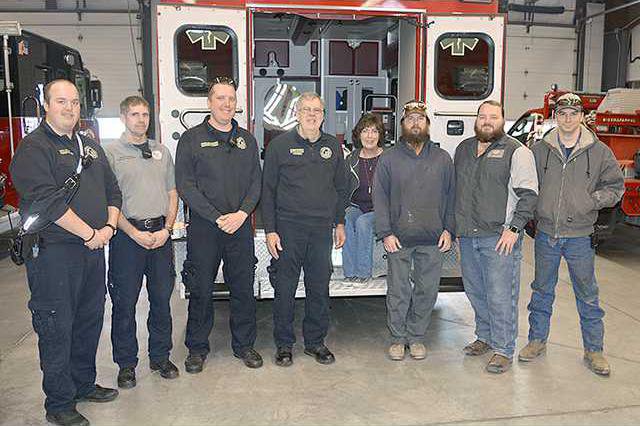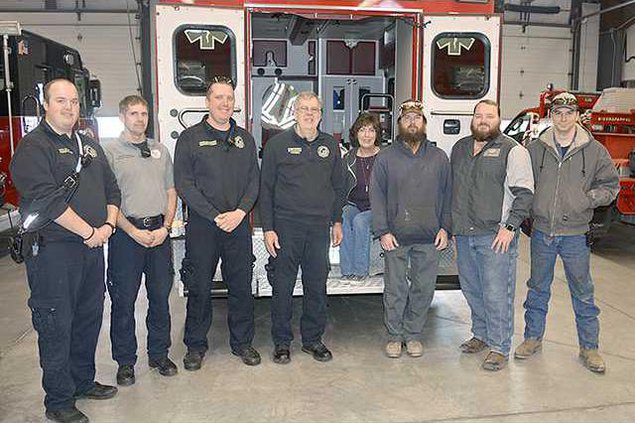GBFD to offer free CPR training
BY DALE HOGG
dhogg@gbtribune.com
The Great Bend Fire Department will offer free community cardiopulmonary resuscitation training sessions from 9-11 a.m. Saturday, March 4, at the Great Bend Recreation Commission’s Carl Soden Building Burnside Room, 1214 Stone.
“We will teach the hands only method,” GBFD Battalion Chief Eugene Perkins said. American Heart Association studies show that the main factor in a victim’s survival is good chest compressions.
This does a lot of good and may attract those turned off by performing mouth-to-mouth resuscitation.
“We will be showing the proper technique,” he said. There will be demonstrations and a time to practice
The come-and-go sessions will last 15-30 minutes and will focus on CPR, but may also include choking emergency rescue methods.
Even though participants will not receive any certification, “it’s 20 minutes and you could save a life,” Fire Chief Napolitano said.
For more information, call the GBFD at 620-793-4140.
Debra Smith sat in the Great Bend Fire Department’s station two Wednesday afternoon surrounded by Jeff Towery, Joe Ashbaugh and Jayton Burns.
“These are my angels,” Smith said.
It was around noon on Oct. 14 of last year when Smith suffered a heart attack at Straub International and collapsed to the floor. Towery, Ashbaugh and Burns all jumped in and performed cardiopulmonary resuscitation, saving her life.
“They are my buddies,” the elated Great Bend woman said. All are or were employees of the agricultural implement dealership at the time.
The trio, all of whom had military or other CPR training, started chest compressions. They kept this up until GBFD firefighters Nick Larmer and Michael Reifschneider, Capt. Mark Pohlman and Battalion Chief Eugene Perkins arrived a short time later.
They started intravenous cardiac medication and defibrillated Smith twice.
“I was sore for six weeks,” Smith joked. “I had to sleep sitting up for three weeks.”
But, she said, that beats the alternative.
This story ended happily. Smith wound up at Hutchinson Regional Medical Center, and two surgeries and six stints later, she is done with rehabilitation.
A missing link
That is not always the case. This incident highlights an oft overlooked link in a cardiac arrest victim’s chain of survival, which also includes first calling 911 and emergency medical services response and hospital care, said Great Bend Fire Chief Mike Napalitano.
“We want to promote bystander CPR because that’s why she’s here,” Napalitano said.
According to the American Heart Association, this early intervention is often the difference between life and death.
Nationwide, there were over 350,000 out-of-hospital heart attacks reported in 2016. The survival rate where there was bystander CPR administered was 46 percent, compared to 12 percent without the immediate attention.
“We’re good at what we do,” Perkins said. “But, the chances of survival are better with bystander CPR. They help us do our jobs.”
“I’ve played through many scenarios,” in the months since the heart attack, Smith said. This was over the lunch hour and what if she had been at home alone with no one to help? What if it had happened while she was driving to or from work?
She is just thankful it occurred where it did, and that there were people there who knew how to respond.
“I just encourage people to get trained,” she said. She also said employers should encourage their staff members to take training.
On a side note, Napolitano and Perkins said many businesses, schools and other facilities have AEDs (automated external defibrillators). They said those in the buildings need to learn how to operate these life-saving devices as well.





